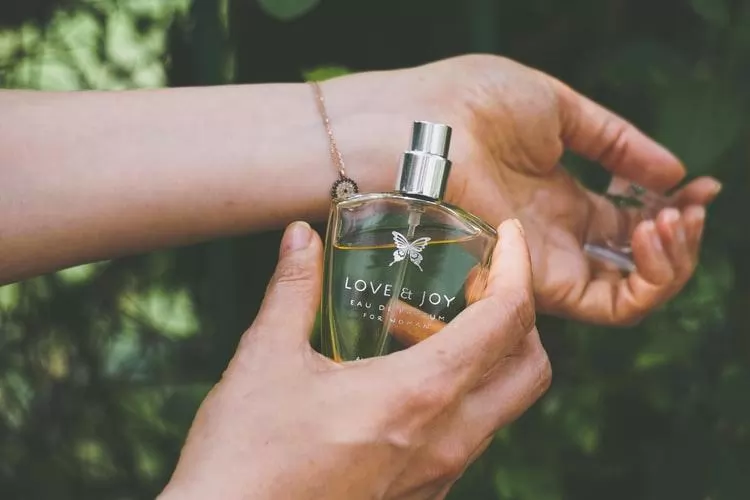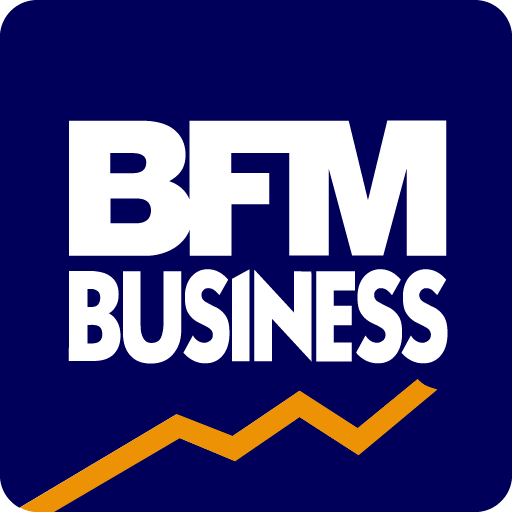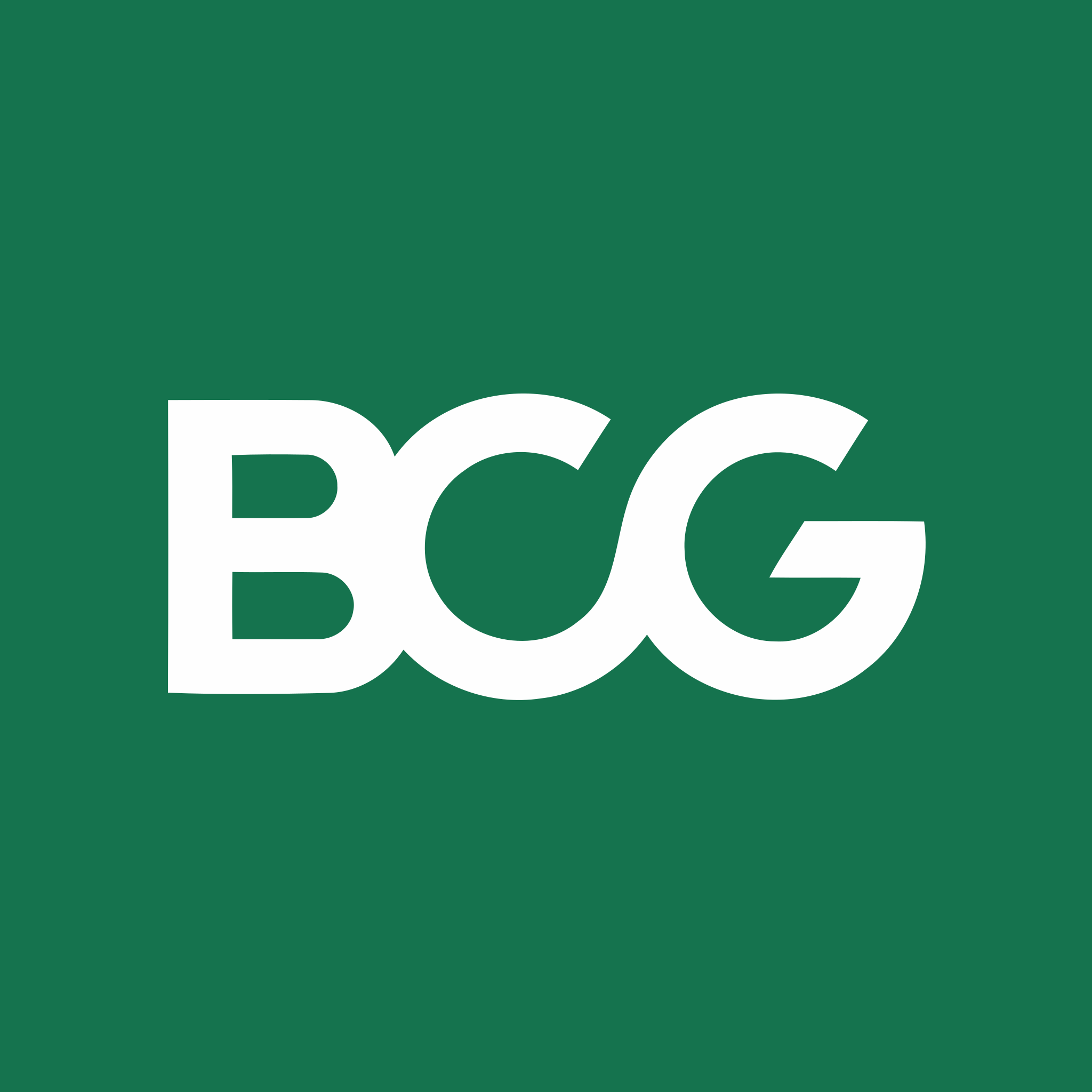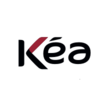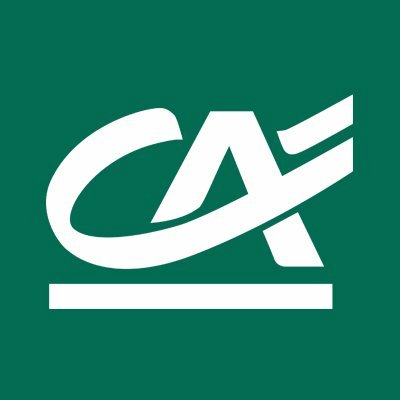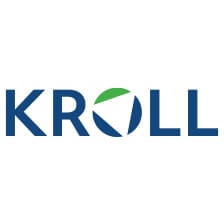Summary of our market study
- Sephora
- Nocibé
- Marionnaud
Integral stores
Pharmacies and parapharmacies
Airport travel retail stores
Large-scale distribution
France boasts the world's largest number of perfume and cosmetics brands
to understand this market
Detailed content of our market study
 Inforamtion
Inforamtion
- Number of pages : 35 pages
- Format : Digital and PDF versions
- Last update :
 Summary and extracts
Summary and extracts
1 Market overview
1.1 Definition and scope of the study
Perfume is a cosmetic product composed of essential oils and alcohol, which can take various forms, such as eaux de parfum and eaux de toilettes, depending on the alcohol concentration and manufacturing process. Essential oils themselves, however, are excluded from the scope of this study.
The perfume market covers all toiletries intended to be applied to a person in order to voluntarily impregnate him or her with a pleasant scent, and therefore includes eaux de toilette, eaux de parfum and eaux de Cologne. Perfumeries are the places where these products are distributed, and can take many different forms, from supermarkets to perfumers' workshops.
The global perfume market is worth around $50 billion, and has been rising steadily for several years, a trend that is set to continue in the future at a CAGR of 5.51% per annum until 2030. This dynamic is driven by the positive performance of the luxury goods sector, particularly French companies such as Chanel, Dior and L'Oréal, and by the growing number of fragrance references, offering products adapted to all markets and consumers.
In 2023, perfume sales in France rose by 7%. The perfume market was driven by both a volume effect, driven by the recovery in consumption following the covid crisis, and a price effect, with inflation-driven price rises in France.
In an environment characterized by persistent inflation, players who have not succeeded in fully passing on the rise in their production costs to the final price must consider adjusting their prices if they want to maintain or even increase their margins. This need is all the more pressing in view of persistent supply chain constraints . The publication of LVMH's disappointing H1 2023 results highlighted the challenges faced by the luxury goods sector in general, due to reduced Chinese demand. The industry, which has enjoyed very strong growth in recent years, faces a number of issues in 2023.
1.2 A fast-growing global market still marked by specific geographical features
The global perfume market is booming. As we can see from the graph below, this market will be worth $** billion by ****. This healthy market is set to continue. According to projections by The Beauty Analyst, the value of the market should reach nearly ** billion euros by ****.
The average annual growth rate is *.**% between **** and ****, and an increase of *.**% per year is forecast between **** and ****.
The global fragrance market World, **** - *****, in billions of dollars Source: ****
The perfumery market is growing, driven by the booming Asian market, and will increase from **% of the global cosmetics market in **** to **% in ****, according to the l'Oreal **** Report.
According to l'Oreal, China, Japan, South Korea and Singapore are particularly important markets. As we can see from the graph below, North Asia accounts for a total of **% of the global cosmetics market, down * points on **** but still the market leader. North America is the second largest market (***). for information, the breakdown in **** was **%, **% and **% respectively. The COVID-** crisis and the closure of Asian borders for many months have led to a loss of purchasing power in the sector.
Structure of the global fragrance market World, ****, % share of sales by value Source: ****
1.3 The French domestic market, leader in a slight slowdown
In ****, fragrance sales were up *% on ****, driven by both higher sales volumes and a favorable price effect. Indeed, the sector benefited from an *% year-on-year rise in sales volumes, as well asa *% rise in the consumer price index for perfumes and eaux de toilette, while make-up and skincare products posted a *% increase over the same period[***].
The French perfume market France, **** - ****, in billions of euros Source: ****
1.4 Foreign trade: A growing surplus balance
France has a very large trade surplus in the perfume sector, and more broadly in the cosmetics sector. As we can see below, French exports of perfumes and perfumery products have been growing steadily since ****, far outstripping the level of imports for the same products.
European production of fragrances and perfumery products France, **** - ****, in millions of euros Source: ****
Between **** and ****, perfume and eau de toilette exports grew by an average of *.*% over this period. Imports, on the other hand, grew more modestly, reaching just *** million euros in **** at a CAGR of c.*% compared with exports of *.** billion euros.
France's main suppliers - Fragrance market France, ****, in millions of euros Source: ****
France's main suppliers of perfumes and fragrance products are its European neighbors. Indeed,Spain is the main supplier, with an overall import value of nearly *** million euros in ****, representing **% of total imports, followed byGermany and the United States. France's main customers are the United States, with almost **% of total exports, followed by its European neighbors Germany, Spain and the United Kingdom. Main outlets for French production - Perfumes and fragrances market France, ****, in millions of euros Source: ****
1.5 The impact of the COVID-19 crisis
Perfumes and color cosmetics have seen a sharp decline in ****, but overall demand for beauty products remains strong, as consumers turn instead to the skincare, hair care and personal care categories in ****, all of which are less disrupted by new Covid-** routines and lend themselves well to online discovery and purchase.gories in **** (***), all of which are less disrupted by the new Covid-** routines and lend themselves well to online discovery and purchase. Covid-** has transformed not only the cosmetics market in ****, but also the habits of both men and women, in more or less lasting ways. [***]
However, according to the same McKinsey report published at the end of ****, the perfume industry is expected to regain its dynamism in ****, faster than the fashion industry, which is not expected to return to growth until ****. The recovery will be led by China, where sales have already rebounded. [***]
In the chart below, we can clearly see the decline of the make-up and perfumery segments, while the skincare and hygiene segments are on the rise. As a result of the various confinements, the global perfume market fell by **% over the period.
CAGR for cosmetics segments World, ****-****, in Source: ****
By ****, the cosmetics market should be ...
2 Demand analysis
2.1 The French and perfume
Beauty and skincare products and fragrances account for the bulk of sales, respectively **% and **% of the sector's total. [***]
Breakdown of cosmetics sales by category France, ****, in Source: ****
On average, in ****, French women spend ** minutes cleansing and moisturizing their face, ** minutes applying make-up in the morning and ** minutes removing make-up in the evening. They use an average of * products every day, compared to a worldwide average of *. Mascara and moisturizer are respectively the make-up and cosmetics products they use most every day. [***]
In ****, French people spent *,*** euros per household on their appearance, representing more than ** billion euros nationwide, including more than ** billion euros on beauty care.
Within this budget, spending on clothing is losing importance, to the benefit of spending on beauty care (***), whose share of the budget has risen from *% in **** to **% in ****, or around *** euros per household per year. In particular, within this "beauty care" budget, the share of perfumes has itself increased: from **% in **** to **% in ****. [***]
More than **% of French women believe that perfume is the skincare and beauty product with the greatest effect on their self-esteem, according to votes.
Impact of skincare and beauty products on self-esteem France, ****,% Source: ****
2.2 Rise of the "top-of-the-range" choice
The beauty market is undergoing a process of premiumization. Indeed, according to Journalduluxe, by ****, while the mainstream beauty segment is expected to grow by *% a year, the prestige segment will grow by up to *%, driven by rising household spending on high-end products. Index of retail perfume sales valued at *** euros or more France, ****-****, Index base *** :**** Source: NPD Group There is a growing trend towards a preference for premium products, including a significant increase in sales of perfumes costing over *** euros. In fact, between **** and ****, this niche market recorded an increase of ***%, equivalent to almost tripling its volume.
Share in value of sales of perfumes costing €*** or more in total perfume sales France, ****-**** Source: NPD Group the market share of perfumes costing over €*** among premium perfumes rose from **% to **% between **** and ****. Consumers, in search of exclusive items, are turning to higher-quality, more expensive and innovative fragrances. "there has been a significant move upmarket, with a preference for high concentrations: eaux de parfum and extracts" [***]
Surfing on the trend, theluxury fragrance offer has expanded, notably with the announcement in **** by Coty (***), of Infiniement Coty Paris, "its most ambitious fragrance project to date", which will bring together ** premium fragrances and is scheduled ...
2.3 The rise of organic and natural products
The trend is also towards more responsible consumption, driven both by a growing interest in the environment, and by the products consumers apply to their bodies. As a result, "Clean Beauty" is on the rise: a survey conducted by Yougov in **** revealed that **% of French people prefer cosmetics brands that are committed to the environment.
By ****, the French organic and natural cosmetics market will be worth *.* billion euros[***].
Frequency of purchase of natural and organic products France, ****, % [Source: Cosmed Source: ****
According to the Agencebio Barometer,in ****, **% of French consumers surveyed were buying organic cosmetics. This figure rises by ** points to **% for those who consume organic products at least once a month.
This makes cosmetics the second most popular non-food item, after hygiene and household products, and ahead of clothing and childcare products.
French women show a strong interest in brands involved in animal protection and social initiatives, with a preference of**% for each of these categories, closely followed by ecological concerns, which garnered **% support.
Topics of brand commitment favored by French women France, ****, % of total Source: Cosmed in ****, Cosmed confirms the trend: according to the report, the brand's ethical and responsible approach continues to influence consumers' purchasing decisions and product selection. ...
2.4 The impact of tourism on perfume sales in France
The impact of tourism on perfume sales in France is of course concentrated in Paris, with sales in airports and department stores on Boulevard Haussman in particular, a destination in its own right in the tours offered to tourists.
The year **** saw a sharp decline in perfume sales in France. Looking back over the year, we can see that there is a strong correlation between perfume sales and tourist arrivals, with tourist fréquentation of *.* million tourists translated into a -*% drop in beauty sales in Paris compared to **** in the selective channel. Conversely, with the return of tourists in ****, sales of perfumes and cosmetics recovered by +*%.[***]
Comparison of changes in tourism and the perfume market France, ****-****, in Source: ****
The health crisis led to a decline in visa applications for France from the start of ****. In fact, the number of visas issued fell by **% year-on-year in the first * months of the year, before being virtually nil during the *st containment.restrictive measures, including the closure of the EU's external borders and the suspension of international flights, have led to a massive reduction in foreign tourist arrivals in France.
Foreign tourist arrivals in France France, **** - ****, in million arrivals DGE
The ...
2.5 Seasonal demand
As perfume is one of the most popular gifts during the festive season, demand in the sector is highly seasonal. According to TF* Info, cosmetics chains generate up to **% of their sales between November and December, thanks solely to perfume sales.Le Monde adds that **% of perfume sales are generated in December, in the run-up to the festive season.
Re
Evolution of interest in "Perfume" searches France, ****-****, base *** Source : Google Trends the graph above represents the proportion of searches for the keyword "parfum" in France over the last five years, compared to when the rate of use of this keyword was highest (***). Thus, a value of ** means that the keyword has been used half as often in the area concerned. Over the last five years, there has been a strong seasonal pattern to this search, with a main peak during the end-of-year festive season. There are also smaller peaks on two other occasions of the year: the first towards the end of January/beginning of February, caused by Valentine's Day; the second in May, caused by Mother's Day. Black Friday is also a major event.
There is also an increasingly significant increase in searches in December from year to year, ...
2.6 France's favorite retailers
In France, the specialty retail market is divided between three major players: Sephora, Nocibé and Marionnaud. Sephora tops the list of France's favorite specialty retailers, with **% of those surveyed saying they like the brand. Nocibé follows with **%, then Marionnaud with **%.
French people's favorite brands France, March ****, in OpinionWay for MPF Conseil - Brand Observatory **** - Q* & Q* - February **** (***)
While Nocibé offers lower prices on average[***] excluding promotions, Sephora remains in the lead thanks to its modern, dynamic brand image and very wide range of products.
Comparison of product ranges by brand France, ****, in units Biba
3 Market structure
3.1 Value chain overview
We propose a summary of the stages in the value chain:
3.2 Growing perfume plants
Perfume flowers belong to a category of plants known as PPAM (***). The Grasse region is one of France's main perfume-producing areas, with distinctive flowers such as Centifolia Rose, Grandifolium Jasmine and Tuberose. [***]
PPAM cultivation in France covered more than **,*** hectares in ****, **% more than in ****. Most of this area was taken up by perfume plants, which accounted for **% of the total area (***). [***].
In ****, there was a *.*% drop in the area dedicated to the cultivation of PPAM, due to the particular climatic conditions of **** (***), which led to lower yields and quality on several crops
Area dedicated to PPAM cultivation France, ****-****, in hectares CAGR *% Source: ****
Distribution of PPAM surface area by type France, ****, in Source: ****
3.3 The perfume-making process
Once the raw materials have been produced, the perfume is then manufactured in * stages(***):
The perfumer blends different essences (***) to create what is known as a fragrance base; This fragrance base is diluted in alcohol, according to the concentration chosen for the type of article (***). Distilled water is also added; This mixture then macerates for an average of ** days to stabilize the perfume; The perfume is then glazed to solidify waxes and other residues, which are then filtered.
Worldwide, the American group IFF and the Swiss group Givaudan dominate the sector, with sales of over €** billion and €* billion respectively in **** . Two French groups are among the main players, Mane SA and Robertet SA.
World's leading flavor and fragrance manufacturers World, ****, in millions of dollars Source: ****
This activity is represented in French nomenclatures by code **.**Z "Manufacture of perfumes and toilet preparations" (***). According to data provided by Urssaf for this activity code, in **** the sector counted *** companies and **,*** employees.
While both the number of establishments and the number of employees have increased over time, there has been a concentration of activity since ****, with a stagnation in the number of establishments but a steady increase in the number of employees.
Number of establishments ...
3.4 Distribution largely dominated by perfumeries and department stores
Fragrance distribution in France France, ****, as % of total Source: ****
By way of comparison, in **** and for the cosmetics sector in general, supermarkets and hypermarkets represented the most important sales channel. The perfume sector therefore presents a particular bias towards specialist stores, justified in particular by the expertise required to advise on this type of sale, as well as the premium image that perfumes carry, which deteriorates when purchased in supermarkets.
Cosmetics distribution in France France, ****, in Federation of Beauty Companies (***)
Perfumeries and department stores
Selective perfumeries account for thebulk of perfume sales in France, and perfume will represent **% of selective channel sales in France in ****.
**% of the value of the selective channel was created via large national chains (***) accounted for *.*% of the selective perfumery market by value. [***]
Brand names
The best-known are Yves Rocher and L'Occitane en Provence (***).
Pharmacies and parapharmacies
Despite the rise of pharmacies in recent years, this distribution channel remains a minority one: in ****, only **% of consumers will buy their perfumes in pharmacies. The perfume brands with the strongest presence in pharmacy-parapharmacies are Roger&Gallet, Nuxe and Caudalie. A positioning that is not premium-oriented.
Supermarkets
Supermarkets are a relatively different distribution channel from those listed above, as ...
4 Offer analysis
4.1 France's favorite brands
dior is France's favorite fragrance brand, followed by Chanel and Yves Saint-Laurent
French people's favorite brand France, ****, % of total Source: ****
According to [***] in ****, the * best-selling women's fragrances would be,
La vie est belle- Lancome J'adore-Dior Numéro * -Chanel Libre-Yves Saint Laurent Angel-Mugler
The * best-selling men's fragrances in **** in France according to[***] are :
Sauvage-Dior Bleu-Chanel Terre - Hermes * million - Paco Rabanne Le Mâle - Jean Paul Gaultier
4.2 The different types of perfumery items
There are different types of articles and different names depending on the alcohol concentration obtained during manufacture(***):
Parfum: alcohol concentration between **% and **%. Eau de parfum: concentration between **% and **%. Eau de toilette: concentration < **%. Eau de Cologne: concentration < *%.
This alcohol concentration determines the quality of the finished product, and consequently its price, but also the length of time the scent remains present. Indeed, the more concentrated the juice, the longer the scent remains on the skin, and a perfume lasts much longer than an eau de toilette. Over the January-May **** period, the best-selling category in the men's segment was eau de toilette, which accounted for two-thirds of sales by value. Eau de parfum accounted for **% of sales, certainly growing strongly with +***% compared to ****, but still far from the share of eau de parfum in the women's market, amounting to **%. [***]
Value sales of men's fragrances by type France, ****, in % [NPD Source: ****
4.3 Fragrance composition
A fragrance can be broken down and analyzed according to the so-called "olfactory pyramid", comprising three levels. [***]
Top notes: these are the scents you smell immediately after spraying the perfume, but also the ones that fade the fastest. These are often the freshest, greenest notes, such as bergamot or citrus. Heart notes: these are the scents that characterize the perfume, those that give it its identity. They are generally floral (***), fruity or spicy. Base notes : these are the scents that last the longest, and those that structure and fix the fragrance. These are often woody or coppery notes, such as musk, amber or vanilla.
Olfactory families
There are a total of seven different olfactory families, applicable to feminine, masculine or unisex fragrances:
Citrus: bergamot, lemon, mandarin; Floral: jasmine, rose, lily of the valley, tuberose, narcissus; Fern: green or lavender notes, oakmoss; Chypre: patchouli, cistus labdanum ; Woody: sandalwood, patchouli, vetiver, cedar; Oriental amber; Copper.
Main ingredients
Perfumes are made up of bothnatural and artificial essences, and both types are necessary to create a fragrance. For example, aldehydes, which give the powdery scent effect of the famous Chanel n°*, are totally synthetic notes, but are widely used in perfumes to enhance and vibrate ...
4.4 Rising perfume prices
Perfume prices have been rising steadily for several years. Consumer price index data provided byINSEE for perfumes and eaux de toilette show that consumer prices rose by **% between **** and ****. Between **** and ****, with inflation and rising raw material prices, consumer prices increased by *%.
Consumer price index for perfumes and toilet waters France, ****-****, base *** in **** Source: ****
Perfumes and toilet waters producer price index France, ****-****, base *** in **** Source: ****
One of the main reasons is the rise in producer prices, which climbed almost **% between **** and ****, driven by higher raw material and energycosts. However, manufacturers have not been able to transfer the full increase in production costs in **** to final selling prices, partly due to the aggressive promotional strategies adopted by retailers.
Raw material prices
The increase in production prices, as well as the price differences between fragrances, stem from the quality of the essential oils they contain. These raw materials have become veritable luxury commodities: jasmine essential oil from Grasse, for example, costs around twice as much as gold per kilo. [***] Here are some indicative prices for natural raw materials:
Jasmine essential oil: **,*** euros per kilo; Rose Centifolia essential oil: **,*** euros per kilo; Iris Fiorentina butter: **,*** euros per kilo.
Source: ****
Breakdown of the ...
4.5 Alternative perfumery in response to market standardization
For several years now, the trend in the French perfume market has been to accumulate launches. Indeed, brands have tended to rely on their best-selling fragrances, endlessly adapting an existing fragrance with minimal variations, in order tomaximize the success of these products, which have become veritable cash cows. For several years now, the average number of launches in France has been between *** and *,*** per year, pushing the market towards a high degree of standardization.
In response to this standardization, more and more consumers (***) are turning to niche perfumery, or alternative perfumery, in the hope of finding a truly original and differentiating signature. Niche perfumeries such as L'Artisan Parfumeur, Jo Malone and Le Labo focus on quality raw materials and original, signature compositions.
This alternative perfumery also contributes to the premiumization of the perfume offer in France, with selling prices often exceeding *** euros. The products are not (***), or their own boutiques. [***]
5 Regulations
5.1 Cosmetics Regulation n°1223/2009
Regulation n°****/****, known as the Cosmetics Regulation, is one of the main European regulations governing the cosmetics market.
Designation of a responsible person
For each product placed on the market, companies must designate a Responsible Person (***). The Responsible Person may be the manufacturer, the importer if the manufacturer is outside the EU, the distributor or a third party established in the EU. This Responsible Person will be both the point of contact for the authorities, and the guarantor of the product's safety and conformity.
Product composition
The Regulation establishes a list of prohibited, restricted or permitted ingredients.
Prohibited substances: mainly CMR substances (***). Restricted substances: there are *** restricted substances, which may be used under very specific conditions, such as maximum percentage of use or purity of the substance. Permitted substances: *** colorants, ** preservatives and ** UV filters.
The Product Information File
Before a product can be placed on the market, it is necessary to submit a dossier containing information on the product concerned. This file must contain a description of the product, a report on product safety, proof of theeffect claimed by the product, and a declaration of compliance with Federation practices (***).
Labeling
The regulation establishes a list of compulsory information on product ...
5.2 The IFRA code
IFRA is the International Fragrance Association, founded in ****. It has developed a Code of Regulation for fragrance manufacturing, which applies to all its members, representing around **% of the global fragrance industry in terms of production volume. This text includes rules of use for over *** ingredients, including prohibitions on use and dosage limits (***).
It is mandatory for all IFRA companies to comply with the standards set out in the text. Thus, the perfume manufacturer can provide an IFRA certificate on its production to ensure that its products comply with the rules set out in the IFRA Code.
6 Positioning the players
6. Player segmentation
The following segmentation of players is used:
- Firmenich
- Givaudan
- CENTRI DI BELLEZZA YVES ROCHER ITALIA
- L'Occitane Groupe
- Sephora
- Marionnaud France
- Chanel
- Jo Malone
- L'artisan Parfumeur (Puig Groupe)
- LVMH Parfums et Cosmétiques (Parfum Christian Dior)
- Coty (JAB Holdind)
- Interparfums
- Groupe Rocher (Yves Rocher)
- Shiseido
- Adopt Parfums
- Pochet Groupe
- Verescense
- Berdoues
- Dolce & Gabbana
- Yves Saint Laurent Parfums (Groupe L'Oréal)
- L'Oréal Groupe
- Artiris Compoz Parfum
- Cofatech
- Vabel Groupe - Sarbec Cosmetics
- Inessens
- Les Eaux Primordiales
- Pierre Guillaume Parfumeur
- Fragonard Parfumerie
- Anjac Health and Beauty
- Sozio (Proxis Développement groupe)
- Douglas
- Nicolosi Créations - Laboratoire Cosmétique Provençal
- Techniflor API Groupe
- Lorience Groupe
- Abl
- Ad2Ma
- Adopt Parfums
- Aesop France
- Alzara
- Amb Distribution
- Anais
- Annick Goutal
- April
- Beaute Concept
- Beautes D'Etre
- Bleu Libellule France
- Bote Onat
- C M D Beaute
- Carré Santé
- Cathr'Yr Beaute
- Charlotte Tilbury Beauty France
- Chery Cosmetique
- Cigalou
- Clyr
- Commerce Expansion
- Condom Parfums
- Cosmetiques Developpement
- Cosmocoif 2 Ormes
- Cosmocoif 95
- Cosmocoif Blancarde
- Cosmocoif Dromel
- Costes Products
- Dbd Manosque
- Dbd Martigues
- Dbd Pertuis
- Dbd St Maximin
- Delange
- Delorme Beaute Vegetale
- Diptyque
- Doce De Limao
- Dpbm
- Ebm
- Elco
- Elea Corp
- Espace Beaute
- Esteban Boutique
- Folies Naturelles
- France Europe Parfums
- Frimousse
- Geraldine
- Go 9 Beaute
- Gv Globus
- Idee Parf
- Ines Et K
- Iris
- Ivanka
- Jenacrisma
- Kamisa Esthetique
- Kiko France
- M&L Distribution France
- Maj Beaute
- Make Up For Ever
- Maldyvs
- Marionnaud Espaces
- Marionnaud Lafayette
- Marketing Beaute Associes
- Martine B
- Md Prestige
- Meline
- Mengaud
- Mjv
- Moi En Mieux
- Monop'Beauty
- My Own Garden
- Myth'S
- Par'A La Plage
- Parcos
- Parfetique
- Parfudis
- Parfum Francis Kurkdjian
- Parfumerie L'Echoppe
- Parfumerie Maryvonne
- Parfums Et Cosmetiques
- Paris Look
- Passion Beauté Developpement
- Prophar
- Saj Yr Cosmetique
- Sc Claira Beaute
- Sephora
- Sté Aixoise Exploit Parfumerie (Saep)
- Star Parfums Cosmetiques
- Taraka Tradition Et Parfums
- Teint De Nacre
- The Body Shop France
- Troyparf
- Uhps Pont
All our studies are available online in PDF format
Take a look at an example of our research on another market!
 Choosing this study means :
Choosing this study means :
Access to more than 35 hours of work
Our studies are the result of over 35 hours of research and analysis. Using our studies allows you to devote more time and added value to your projects.
Benefit from 6 years' experience and over 1,500 industry reports already produced
Our expertise enables us to produce comprehensive studies in all sectors, including niche and emerging markets.
Our know-how and methodology enable us to produce reports that offer unique value for money.
Access to several thousand articles and paid-for data
Businesscoot has access to all the paid economic press as well as exclusive databases to carry out its market research (over 30,000 articles and private sources).
To enhance our research, our analysts also use web indicators (semrush, trends, etc.) to identify market trends and company strategies. (Consult our paying sources)
Guaranteed support after your purchase
A team dedicated to after-sales service, to guarantee you a high level of satisfaction. +44 238 097 0676
A digital format designed for our users
Not only do you have access to a PDF, but also to a digital version designed for our customers. This version gives you access to sources, data in Excel format and graphics. The content of the study can therefore be easily retrieved and adapted for your specific needs.
 Our offers :
Our offers :
the perfume market and perfumeries | France
- What are the figures on the size and growth of the market?
- What is driving the growth of the market and its evolution?
- What is the positioning of companies in the value chain?
- Data from several dozen databases
Pack 5 études (-25%) France
- 5 études au prix de 74 €HT par étude à choisir parmi nos 1200 titres sur le catalogue
- Conservez -25% sur les études supplémentaires achetées
- Choisissez le remboursement des crédits non consommés au terme des 12 mois (durée du pack)
Consultez notre catalogue d’études sectorielles
